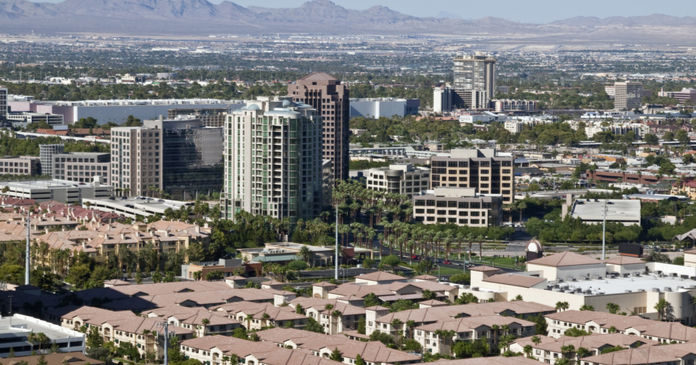Yardi Matrix released its January report on the multifamily housing market. The report describes a market with healthy year-over-year rent growth.
Waiting for spring
Yardi Matrix reported that the average rent nationwide was $1420 in January, 2019, the same level as in August, 2018. This follows the usual annual pattern where rates rise in the spring through summer period and then stagnate for the rest of the year. Compared to January, 2018, rents were up 3.3 percent.
For reference.the Bureau of Labor Statistics reported that the all-items consumer price index was up 1.9 percent on a year-over-year basis in 2018. Clearly, rents are continuing to increase at a slightly faster pace than prices generally. On the other hand, data from Sentier Research indicates that median household income grew at a rate of 5.8 percent in 2018, which indicates that the median household’s ability to afford the rent may have improved during the year.
Who’s hot, who’s not
The Yardi Matrix report focuses on the 30 largest metro areas and ranks them both by average rent growth over the last 12 months and also by rent growth in two sub-classes of apartments. These are the “renter by necessity” (RBN) class and the “lifestyle” (renter by choice) class.
The report identifies markets with the highest average annual rent growth as Las Vegas (7.9 percent), Phoenix (6.5 percent), Atlanta (5.9 percent), Inland Empire, and San Jose.
The markets with the lowest average annual rent growth were Houston (0.7 percent), Kansas City (1.2 percent), Baltimore (1.8 percent), San Antonio (2.2 percent) and Orange County (2.4 percent).
A recent trend in multifamily housing is that workforce housing (RBN) has been in short supply while much of the new product being introduced to the market is in the lifestyle class. This has caused rents of RBN units to rise more strongly than those of lifestyle units. Yardi Matrix reported that this trend continued in January, although the spread between the two rates of growth compressed somewhat. Rents on RBN units were up 3.8 percent over their levels of a year earlier while rents on lifestyle units were up only 3.1 percent.
Other markets of note
The report also provides rent growth information for 18 smaller markets. Leading this group was Reno (8.8 percent), followed by Tacoma, Tucson, Central Valley and NC Triad.
The complete report has more information about the larger markets including numbers on job growth, completions of new units and occupancy rates. It can be found here.















